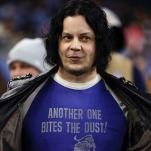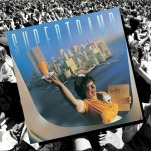Last thoughts on Dennis Hopper

One of the most telling stories I’ve ever heard about Dennis Hopper involves a film few have seen: Mad Dog Morgan, a 1976 Australian production about one of that country's famed outlaw folk heroes. Hopper starred in the film at a time when he’d made himself persona non grata in Hollywood. He’d enjoyed great success with Easy Rider, but his directorial follow-up, The Last Movie, turned into a flop, and an expensive one at that. (Hopper was given free rein to shoot what he liked in Peru, and returned with a film that can most kindly be described as "difficult.") What’s more, Hopper fell into druggie excess remarkable even for Hollywood in the 1970s, a decade that saw him mostly wandering around his home in Taos, New Mexico, shooting things and going conspicuously mad. On the Mad Dog Morgan DVD, director Philippe Mora reveals that Hopper reined in none of his habits during the shoot, but still had an uncanny gift for hitting every mark and remembering every line, thanks to his training in the 1950s studio system as a young man. His performance in the movie is remarkable. Even when he lost it, he still had it.
That says a lot about Hopper, who was often stuck between two worlds. Once a promising young star, he had his first notable role as one of the James Dean-threatening toughs in Rebel Without A Cause. There, he fell under the spell of Dean, whom he idolized, and whose Method approach he took to heart. It would serve him well, but not immediately. Shooting the 1958 film From Hell To Texas for veteran director Henry Hathaway, Hopper stuck to his interpretation of the script through 80 takes before delivering his lines the way Hathaway instructed. There are two instincts at work here: an artist’s desire to get his way, and a professional’s willingness to keep doing the takes because there’s a job that needs to be done.
The Hathaway incident made Hopper more or less unemployable in movies for a while, so he turned to television, art collecting, and photography. In the lattermost pursuit, he first revealed the remarkable eye later evidenced in his directorial work. Some examples (the second became the cover of a two-disc greatest-hits album by The Smiths):
The early ’60s found Hopper living as a professional exile, but the end of the decade—“The Sixties,” in other words—elevated him to the status of an icon. Hopper had parts in such notable films as Cool Hand Luke and Sons Of Katie Elder (which reunited him with Hathaway, remarkably). He also played a biker outlaw in The Glory Stompers. That’s a largely forgettable movie, but it helped plant a seed, and soon he and pal Peter Fonda—who also had a biker movie under his belt—began brainstorming a notion of a new sort of Western, one with cyclists instead of cowboys. Working with screenwriter Terry Southern, the three created Easy Rider, which Hopper directed and served as co-star alongside Fonda, who produced, and Jack Nicholson.






![Rob Reiner's son booked for murder amid homicide investigation [Updated]](https://img.pastemagazine.com/wp-content/avuploads/2025/12/15131025/MixCollage-15-Dec-2025-01-10-PM-9121.jpg)

























![HBO teases new Euphoria, Larry David, and much more in 2026 sizzle reel [Updated]](https://img.pastemagazine.com/wp-content/avuploads/2025/12/12100344/MixCollage-12-Dec-2025-09-56-AM-9137.jpg)







